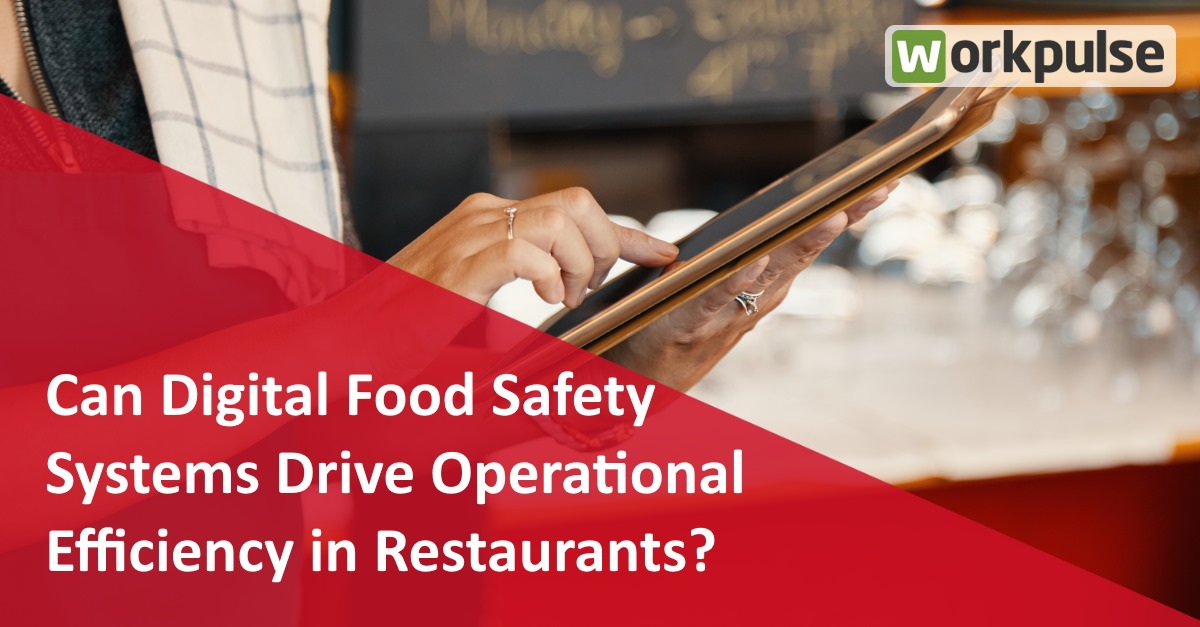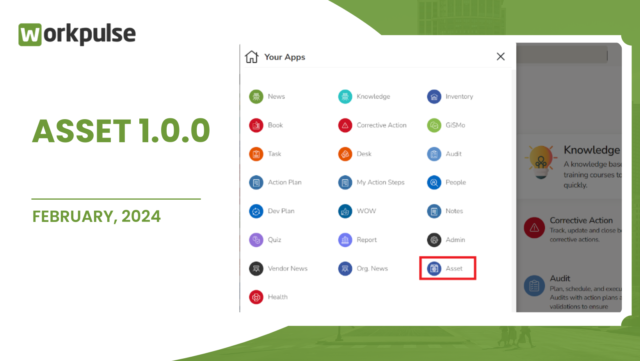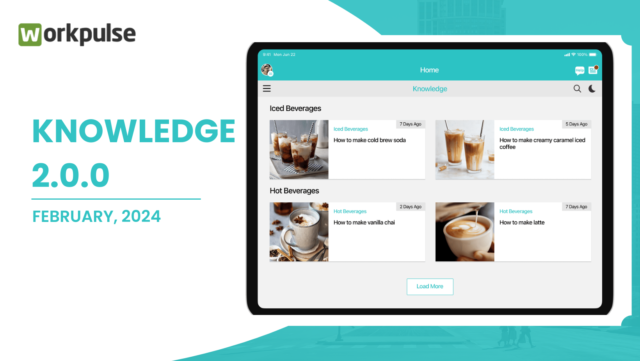Food safety is a high concern among operators across all segments. 89% of restaurant operators believe that food safety issues could put their business at a considerable risk and would directly lead to negative impact on their sales as well as brand image. Interestingly, the percentage of restaurant owners having confidence in being able to identify food safety issues promptly has been declining over the last few years. While this segment constituted 50% of restaurant operators in the US in 2018, the percentage was close to 35% by 2020.
Restaurants and QSRs have to maintain compliance with food safety guidelines. This is crucial from the perspective of the health of guests as well as for protecting the reputation of the brand itself. With the availability of various digital food safety solutions, restaurant owners are now gradually considering making investments in technology for improving their current operations. The digital enablement will help restaurants improve their operational efficiency by automating the processes, bringing in accountability, and also allowing key executives to have 100% visibility of their business with real time reporting.
Simply identifying food safety issues will not help restaurants become compliant. Appropriate corrective actions have to be implemented with focus on timely resolution. As per a study, 23% of restaurants are able to correct food safety issues within 1-2 days of problem identification, while 31% were able to do it within 1-4 weeks. In order to ensure faster resolution, digital food safety systems have to be put in place to allow regular inspections to be conducted more effectively along with assigning corrective actions to each non-compliant case.
Challenges in ensuring food safety at restaurants
Even though restaurants seem confident about their food safety protocols, it would take just one employee forgetting to refrigerate marinating steaks or serving undercooked hamburger to an unsuspecting customer, before a foodborne illness breaks out. No restaurant can ever be prepared enough to face the outcomes of such safety violations. This is where digital food safety systems come into play by allowing real time monitoring and escalating of issues to the right people. Even 99% preparedness for food safety still leaves a 1% chance of issues going unnoticed, and this is enough to harm the brand’s reputation.
One of the biggest challenges of following manual processes with respect to daily inspections and routine checks is the dependency on employees to get the tasks done. Employees cheating on inspection is one of the most widespread problems in the food service industry. The reason could be that the employees are occupied with other work (often the result of excessive work load on a single employee) or they are simply lazy and choose to lie on the inspection checklists rather than conducting a proper inspection.
Food safety protocols are only effective if they are followed by all team members regularly. Some of the reasons for violations of food safety norms include inconsistency and inefficiency in restaurant operations, poor food safety culture, ineffective or lack of employee training, lack of employee engagement, and resistance to adopting technology for proper monitoring. When it comes to the management team’s involvement, they are focused on business growth, strategy, day-to-day logistics, competition, and revenue. They rarely get enough time to consolidate the data maintained on physical logbooks to understand the food safety compliance of their restaurant locations.
These challenges have become major obstacles for food safety implementation at restaurants. Based on our analysis, the lack of actionable data, no real time monitoring, inadequate training, absence of accountability, and lack of defined SOPs have given rise to operational problems which have in turn caused food safety risks at most restaurants.
Key features of a digital food safety system
Implementing a digital food safety system at a restaurant is more than transitioning from paper to digital or getting rid of pencil whipping. Digital food safety solutions are designed with the intention of helping restaurants overcome the underlying factors which give rise to food risks in the first place. According to a study conducted for restaurants in the US, 83% of operators shared that embracing technology has led to positive outcomes. However, only 23% claimed that their organization used technology to automate their operations to a great extent. This clearly identifies the gap in adoption of technology for improving operational efficiency at restaurant locations.
Digital food safety systems work on four core aspects, namely, employee training, defined SOPs, real time monitoring, and accountability. The system comes with custom checklists and automated tasks which can be picked up the available team members and completed by simply following the template. This eliminates errors and redundancy. Moreover, it reduces the training time for new as well as existing employees. As the SOPs are defined, users with specific access can easily work on the digital interface and ensure the tasks are completed.
Most digital food safety systems integrate with IoT components such as Bluetooth sensors and thermometers for recording temperature accurately and directly to the app. This makes the process faster and eliminates the need for manual entries, even on the app itself. The saved time can be used productively in other areas such as self-development, upskilling, or additional responsibilities. Empowering employees with the right tools is also useful in making them efficient which leads to better retention.
As the data is collected and stored in a secure cloud environment, it is easy for executives and managers to monitor compliance in real time as well as get the trend analysis based on historical data. Restaurants that have implemented a digital food safety system agree that the actionable data provided by the reports actually help in maintaining a proactive approach rather than a reactive. This helps in saving time, efforts, and cost while ensuring seamless management of tasks.
In case food safety risks are identified, the digital system allows corrective actions to be assigned. This helps to ensure compliance across all the areas of the restaurant location. The best thing about digital food safety systems is that it completely eliminates the need for managers to physically travel to locations to get information. With the digital reporting, area managers can now look after more locations than before, and prioritize their efforts on areas that need immediate attention.
Impact of digital food safety on restaurant operations
While a digital food safety system cannot ensure a complete revamp of operational efficiency, it is a key step in the right direction towards adapting to a digital environment. One of the largest franchisees of Dunkin Donuts in the US shared that after implementing the Workpulse digital food safety solution, they were able to get 100% visibility for operations across all locations, improved productivity by 15%, and the actionable data helped them make important decisions by focusing on areas that needed immediate attention. A senior executive shared that “they cannot imagine going back to the old process, now that they have tried the digital operations management solution”. Needless to say, this is just one of the areas of business operations that was benefited from the implementation of technology.
However, if restaurants are looking to achieve operational excellence, then they really need to focus on audit management, preventative maintenance, performance evaluation, and guest feedback management along with digital food safety. The combination of these solutions works best for restaurants (full service and fast casual). Not only does it help to improve efficiency across all levels of the organization’s hierarchy, but also solve issues in the key aspects of any restaurant’s service area.
In terms of the return on investment in such technologies, the benefits will definitely be seen in the long term. However, for understanding the short-term benefits, organizations will be able to see better employee retention rates, faster onboarding, real time actionable data, and cost savings in daily operations. QSRs and restaurants are gearing up to embrace technology in 2021, now that they are planning to come back on track following the pandemic of 2020. If you are still prospecting over making the transition to a digital solution, then get in touch with our consultants for understanding the impact of our operations management platform for your restaurant.








One comment
watch series
July 10, 2022 at 9:07 pm
Very nice style and design and great written content , hardly anything else we want : D. Darren Raef